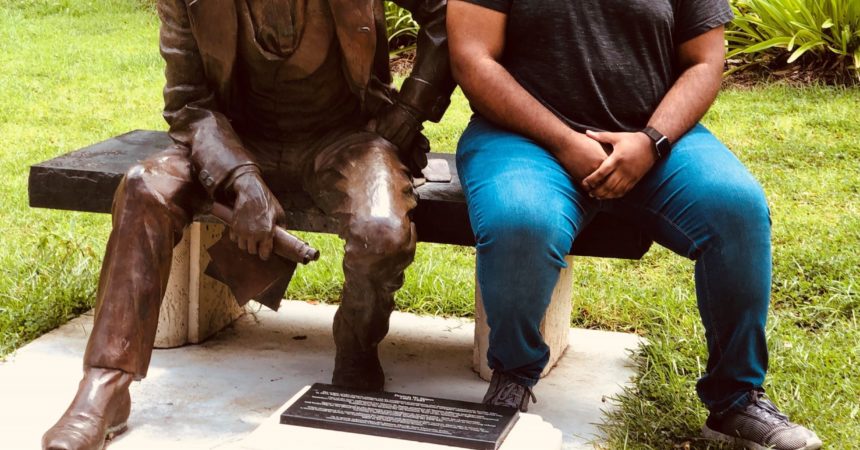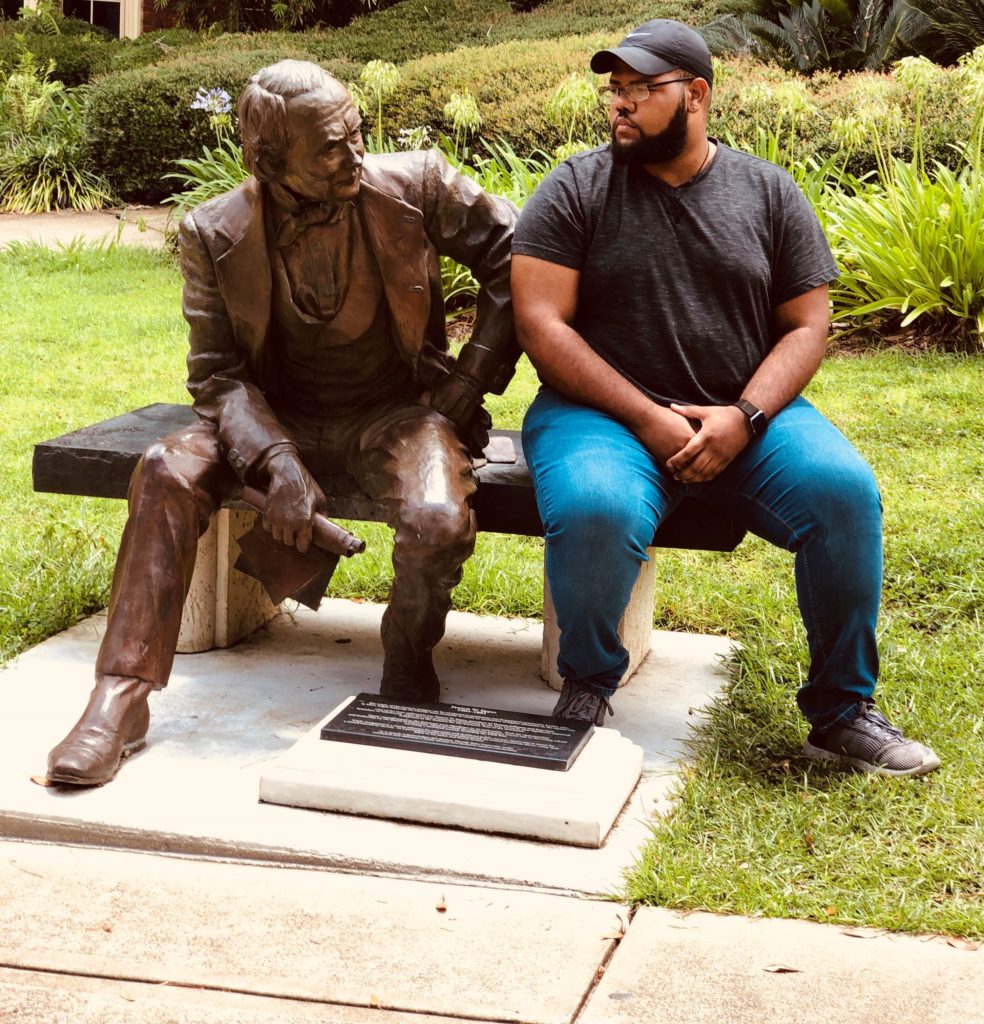
Removal completes saga of Eppes statue
By St. Clair Murraine
Outlook staff writer
One more chapter in the saga of the Francis Eppes statue is done on the campus of Florida State University.
Reaction to the decision by President John Thrasher to remove the statue from Mina Jo Powell Green last Thursday has been swift and mixed. Relatives of Eppes’ questioned the removal, while slave historian Larry Rivers said Confederate monuments should be removed but not destroyed.
Khamare Garner hasn’t waffled about his stance, though.
Garner was one of several FSU students who mounted the latest call to have Eppes’ statue removed completely from the campus. They wanted the statue to be removed because Eppes, a former Tallahassee mayor, was a slave owner.
The students also asked that Eppes Hall, near where the statue was located, be renamed for civil rights icon CK Steele.
The removal comes at a time when Confederate statues and monuments are being taken down across the country amidst protests over racial injustice and police brutality on Blacks.
Thrasher made the decision to remove the statue just a week after meeting with Garner and other students over the matter.
“I was shocked,” Garner said, after learning that the statue was removed on a flatbed truck and taken to an undisclosed location off campus. Garner said during the meeting Thrasher “was very adamant that the statue would not be removed at this time.”

Photo submitted
However, Thrasher in his announcement of the removal also disclosed that he has formed a Task Force on Anti-Racism, Equity & Inclusion. English professor Maxine Montgomery will chair the task force, Thrasher said.
“With the hope of fostering a stronger sense of trust, respect and good faith within the university community, Professor Montgomery and I agree that the Francis W. Eppes statue should be immediately placed off campus as the task force begins its work,” Thrasher said in a statement. “The panel members will make final recommendations on specific symbols and names of buildings on campus, including the statue, Eppes Hall and Doak S. Campbell Stadium, and will examine how to best reflect FSU’s values in relation to its historical connections to race and ethnicity.”
Garner said that while removing the Eppes statue isn’t as big as Blacks getting the right to vote, it’s a statement that “minds and hearts can be changed.”
During the meeting that he and other students had with Thrasher, Garner said he told the president about how offensive the statue was to Blacks.
“I told him that as freshmen we come to FSU with a mind full of hope,” he said. “We think we are going to change the world and that’s great to have. But seeing that statue is like a big wagging finger in the face of so many African Americans. That’s what that statue represented to us.”
Rivers, a distinguished professor at FAMU who has written nine books on slavery, said the statues were put up around the country to honor Confederates while intimidating Blacks with their presence.
The effort to remove Eppes’ statue started in 2016. Two years ago, it was moved from in front of the Westcott Building to the latest location near a building that also bares Eppes’ name.
“What I can say about the Francis Eppes statue and other similar Confederate statues in general is this: They are offensive to some people. And some people feel they should be removed and destroyed,” Rivers said in a prepared statement. “I believe Antebellum statues and Confederate Monuments should be definitely removed from public spaces.”
Rivers went on to warn against destroying the statues that are being taken down, noting their place in history.
“The statues of Francis Eppes and other Civil War Confederate soldiers/personalities like it should not be destroyed,” he said. “They are a part of our history, whether we agree with them or not. But again, I think they should be removed from public spaces outside and place inside at various museums where their stories can be told in the context of American History in general.”







